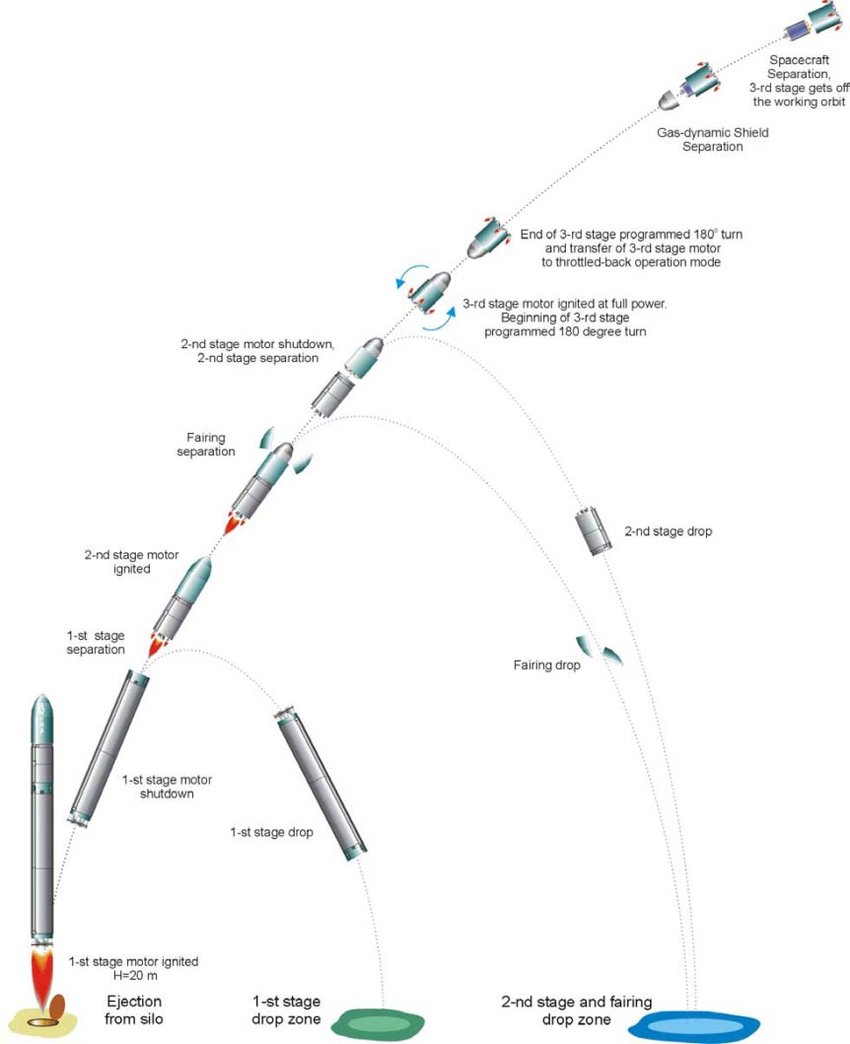Description

Disclaimer: Copyright infringement not intended.
Context
- More than 140 experts and dignitaries have signed an open letter published by the Outer Space Institute (OSI) calling for both national and multilateral efforts to restrict uncontrolled re-entries of rocket.
What are the stages of a rocket launch?
- Rockets have multiple stages. Once a stage has increased the rocket’s altitude and velocity by a certain amount, the rocket sheds it.
- Some rockets jettison all their larger stages before reaching the destination orbit; a smaller engine then moves the payload to its final orbit.
- Others carry the payload to the orbit, then perform a deorbit manoeuvre to begin their descent. In both cases, rocket stages come back down — in controlled or uncontrolled ways.

Separation events of a typical Launch Vehicle

What is an uncontrolled re-entry?
- In an uncontrolled re-entry, the rocket stage simply falls. Its path down is determined by its shape, angle of descent, air currents and other characteristics. It will also disintegrate as it falls. As the smaller pieces fan out, the potential radius of impact will increase on the ground.
- Some pieces burn up entirely while others don’t. But because of the speed at which they’re travelling, debris can be deadly.
The Dangers of Uncontrolled Re-Entry
International Space Safety Foundation Report
- A 2021 report of the International Space Safety Foundation said, “an impact anywhere on an airliner with debris of mass above 300 grams would produce a catastrophic failure, meaning all people on board would be killed”.
- Most rocket parts have landed in oceans principally because earth’s surface has more water than land. But many have dropped on land as well. Any kind of re-entry will inevitably damage some ecosystem.
Recent examples of striking of rocket parts due to re-entries
- Scientists are worried about the re-entries and the have cited examples of parts of a Russian rocket in 2018 and China’s Long March 5B rockets in 2020 and 2022 striking parts of Indonesia, Peru, India and Ivory Coast, among others. Many news reports have focused on Chinese transgressions of late, but historically, the U.S. has been the worst offender.
- Parts of a SpaceX Falcon 9 that fell down in Indonesia in 2016 included two “refrigerator-sized fuel tanks”. If re-entering stages still hold fuel, atmospheric and terrestrial chemical contamination is another risk.
Casualty Risk
- Conservative estimates place the casualty risk from uncontrolled rocket body re-entries as being on the order of 10% in the next decade” and that countries in the ‘Global South’ face a “disproportionately higher” risk of casualties.
U.S. Orbital Debris Mitigation Standard Practices (ODMSP)
- The U.S. Orbital Debris Mitigation Standard Practices (ODMSP) require all launches to keep the chance of a casualty from a re-entering body to be below 0.01%. But the U.S. Air Force and the NASA have waived this requirement on multiple occasions.
Canada Researchers
- A July 2022 study by researchers in Canada found that this threshold, which some other countries have also adopted, is “arbitrary and makes little sense in an era when new technologies and mission profiles enable controlled re-entries,” and because many places have become more densely populated.
No international binding agreement
- There is no international binding agreement to ensure rocket stages always perform controlled re-entries nor on the technologies with which to do so.
Liability Convention 1972
- The Liability Convention 1972 requires countries to pay for damages, not prevent them. These technologies include wing-like attachments, de-orbiting brakes, and extra fuel on the re-entering body, and design changes that minimise debris formation.
Future Solutions
- Bodies should aim for an ocean in order to avoid human casualties.
- Advances in electronics and fabrication have made way for smaller satellites, which are easier to build and launch in large numbers. These satellites experience more atmospheric drag than if they had been bigger, but they are also likelier to burn up during re-entry.
Shifting our Mindset to a Circular Space Economy
- Our current linear space economy is reflected in the hundreds of satellites being launched every few weeks without a global space traffic coordination and planning process.
- Stakeholders must develop and maintain a circular space economy, eliminating waste and pollution such as space debris, circulating products and materials via in-space servicing and manufacturing (ISAM), and helping regenerate the space environment by minimizing anthropogenic effects and impacts.
Placing Responsibility for Space Sustainability on the Producer
- Within waste management frameworks there is an Extended Producer Responsibility (EPR) whereby responsibility for the end-of-life of a product falls upon the shoulders of those producing them. EPR for space would mean that satellite and launch providers would make these easily reusable and recyclable in the very design of the product.
- In order for EPR to be successful, there must be a way to measure and monitor for compliance, and where lack of compliance exists, implement an effective mechanism for enforcement.
Hope of Sustainability
- We do not have sustainable space object disposal without a consequence to the environment, and uncontrolled re-entries are not responsible disposal but rather abandonment left to chance and hope of sustainability. And we owe it to space and our planet to create better solutions.
Uncontrolled Re-Entry is Not Disposal, It's Abandonment
Must Read Article on Space Sustainability: https://www.iasgyan.in/daily-current-affairs/space-sustainiability
https://www.thehindu.com/opinion/op-ed/explained-the-uncontrolled-re-entries-of-satellites/article66292610.ece













